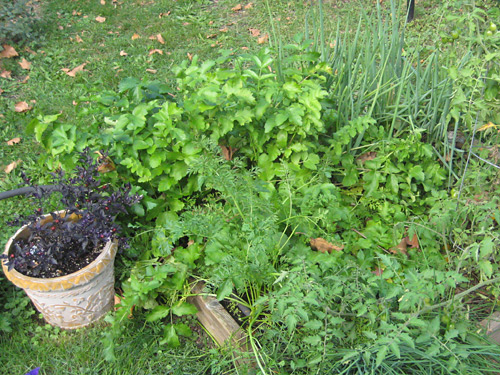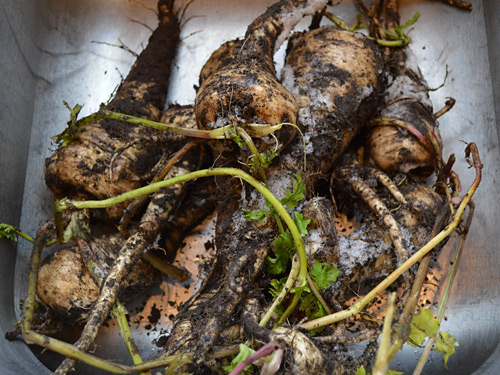At the end of April last season, I planted the first round of vegetable seeds in our two raised beds. A crop new to us for that season was the Hollow Crown Parsnip. I had been introduced to parsnips by some foodie friends. They had served it in place of mashed potatoes for a meal. It was quite yummy.
Parsnips (Pastinaca sativa) are root vegetables native to Eurasia. They are a biennial, grown as an annual, and a member of the parsley family. The variety we grew was fairly low maintenance to raise and, for us, disease and pest free. The seeds seemed to take forever to germinate, over 20 days. Our spring greens were well on their way at the end of May when the parsnips broke through soil’s surface. Afterward, I read some gardeners mark parsnip rows by dropping the quickly germinating radish in with them. Also, I found out the seed is often short-lived, so we may be buying new seeds in the Spring.
The parsnips grew on the Lot the entire season long without being harvested. Other vegetables like radishes, carrots, snow peas, tomatoes, and green onions rotated in and out of the bed. Here is one of the last photos I took of the veggie beds for that season (sans snow). In this photo from October 26th, the parsnip greens (to the right of the potted pepper and left of the green onions) are large and healthy.

Parsnips are considered winter vegetables because their flavor does not fully develop until the winter season. The roots need to be exposed to freezing temperatures for two to four weeks first. These type of lower temperatures convert the starches in the roots to sugars, giving the parsnips a sweet flavor. When we tucked the veggie beds away for the winter, we covered the crowns of the parsnips with several inches of shredded, Fall leaves. Just yesterday, the Other Half went into the backyard, dug through the snow to the garden bed, and harvested the parsnips.

They looked wonderful. I checked them over for any disease or pest damage and didn’t notice anything. The only aesthetic oddity I found was some of the vegetables had forked roots. I read in an University of Illinois Extensions article that this could be caused by a high amount of fresh organic matter in the soil. Some of the parsnips were also smaller than normal, but I believe that is a result of me forgetting to thin the seedlings. Here are the veggies after a good scrub and rinse with water.

This is the point where I turn our homegrown vegetables over to the Other Half and he begins to work his magic. Half of the harvest was sliced into chunks like carrots and added to a delicious pork stew with apple cider and Guinness. Prepared in this way, the parsnips have the texture of a cooked carrot and add a wonderfully sweet flavor to the dish. It was perfect for the snowy, blustery weather we have been having on the Lot.
Do you have a favorite way to prepare parsnips?